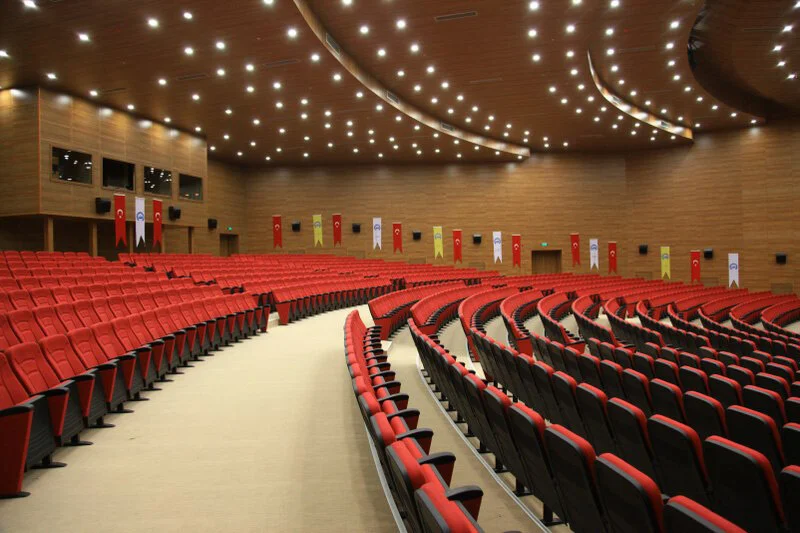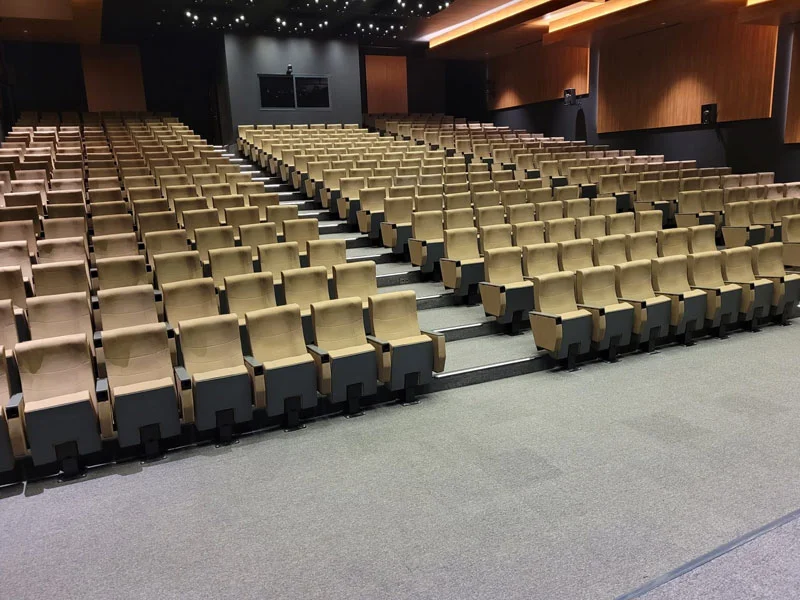When you step into a concert hall, an opera house, or a large cultural venue, the very first thing that connects you with the atmosphere is not only the stage, but also the performing arts center seat you sit on. Behind each of these seats lies years of design expertise, engineering detail, and a strong vision to enhance the audience’s overall journey. For professionals like venue owners, architects, and procurement specialists, understanding what defines these seats and why they matter so much is not just helpful—it’s essential for long-term project success.
Table of Contents
What is a Performing Arts Center Seat?
A performing arts center seat goes far beyond being just a chair in a hall. These seats are purposefully engineered to optimize acoustics, provide unobstructed sightlines, and maintain durability under heavy usage for decades. But have you ever wondered why some venues maintain their elegant look for over 20 years while others show wear after only a few seasons? The answer often lies in the seat’s construction, fabric choices, and load-bearing mechanisms.
From flame-retardant foams to steel-based support frames, every technical choice influences both audience comfort and operational efficiency. Procurement teams often evaluate international fire codes, acoustic absorption tests, and lifecycle cost analyses before making their final selection.
Acoustic Impact of Seating
Seating in a performance venue directly affects sound reflection and absorption. Did you know that empty seats can mimic the absorption of a seated audience if designed with the right materials? This prevents a hall from sounding hollow during rehearsals and ensures consistent acoustic quality regardless of occupancy.
Durability Standards Across the Globe
High-traffic venues may require chairs tested with more than 100,000 opening and closing cycles. International manufacturers often use EN 12727 or BIFMA standards to validate the structural strength of their chairs, guaranteeing that wear and tear remain minimal.
Why Performing Arts Seating Shapes Audience Experience
When we speak about performing arts seating, we’re not simply talking about placing rows of chairs in a hall. Instead, we are designing an experience where every audience member feels included, regardless of their seat position. This is why professionals often ask: how do seats influence visibility and engagement?

The answer lies in careful rake design, seat spacing (typically 50–55 cm / 20–22 inches per seat), and armrest positioning. In long performances, ergonomic support reduces fatigue, keeping audiences attentive and emotionally connected to the performance.
Materials That Enhance Longevity
Venue managers increasingly prefer fabrics with high Martindale rub counts (above 50,000 cycles) to withstand frequent usage. Leatherette options are sometimes used, but woven textiles with acoustic transparency often perform better in halls designed for classical music.
Arts Center Chairs: More Than Just Seating
Arts center chairs are often tailored to the cultural identity of the venue. For instance, national opera houses may request custom embroidery or wood finishes that match historical architectural details. This blending of tradition with modern engineering creates chairs that are both functional and symbolic.
But here’s a question many decision-makers ask: is customization worth the additional cost? In many cases, yes—because tailored design reinforces the venue’s identity, attracts sponsorships, and even becomes part of the cultural heritage of the city.
Custom Performing Arts Chairs in Practice
Large-scale projects often involve mock-up installations where decision committees evaluate seat design on-site. This allows professionals to test comfort levels, sightline accuracy, and finishing details before mass production begins.
Performing Arts Seating and Their Technical Demands
Theater venue seats are often subject to the most demanding technical criteria because live theater involves dynamic audience reactions—laughter, applause, standing ovations. These actions increase stress on the seating system.
One critical detail is the tip-up mechanism. Spring-loaded or gravity-assisted systems allow aisles to remain clear when not in use, complying with international fire safety standards. The angle of the backrest, often between 18–22 degrees, also plays a major role in keeping viewers engaged without straining posture.
Ergonomic Theater Chairs for Long Performances
Professionals know that a performance lasting three hours feels dramatically different if the chair provides lumbar support and cushioning thickness of at least 8–10 cm (3–4 inches). That’s why ergonomic theater chairs have become a standard expectation rather than a luxury.
Performance Hall Seating: Design Meets Function
Performance hall seating is not only about individual chairs—it’s about how the entire layout works together. The seating bowl, balcony projections, and even row curvature define how well audiences can connect with the stage.
Here’s something many don’t realize: staggered row designs can reduce sightline obstructions by as much as 30%. That small adjustment significantly enhances audience satisfaction.
Modern Performance Seating Trends
Today’s modern performance seating often integrates cup holders, integrated USB charging, or even silent ventilation systems in premium rows. These additions, once considered optional, are increasingly requested in high-end venues across Asia and the Middle East.
Cultural Center Chairs and Community Value
Unlike opera houses or theaters, cultural center chairs must serve diverse purposes—from conferences to concerts to community events. This means adaptability becomes a central requirement.

Professionals often debate: should venues prioritize flexibility over aesthetics? The reality is that foldable and stackable designs, when executed with high-quality materials, can meet both requirements without compromise.
Durable Arts Venue Chairs for Long-Term Investment
A cultural center might host more than 500 events annually. That’s why durable arts venue chairs with reinforced joints and modular replacement parts can save significant maintenance costs. In many projects, the lifecycle value outweighs the upfront price tag.